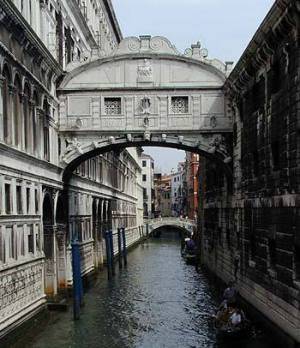The Venetian Dilemma
This situation of decadence is captured in the documentary The Venetian Dilemma, city or theme park?, shot by Carole and Richard Rifkind in 2004 with the aim to raise the important question on the future of Venice to the surface. “We all know that Venice is a deeply loved city,” the Rifkinds have declared, “That the story of Venice resonates in communities everywhere…however each time we return to this beloved place we are struck anew, and with even greater force, by the way in which economic and demographic change, an increasingly globalized economy and ever-growing tourism, are, relentlessly, depriving the city of it “Venetianness”. We feel deep sympathy with the growing sense of malaise amidst our Venetian friends. And we have come to understand that, as foreigners, we are part of the problem. So, we have also come to accept that, as foreigners, we must also make a contribution towards a solution.” The Rifkinds bought a house in Venice about eighteen years ago and when they started making the film, more than seven years ago, they were not filmmakers by profession. Richard was a medical researcher and Carole was an architectural historian. But the necessity rose to do something for their adoptive city so, in order to document the dramatic transformation that was taking place in Venice, they shot the documentary. The making of the film was long and intensive, sometime even problematic. They conducted long interviews with more than 50 Venetians, another 25 non-Venetians. Although the protagonists of the film are four, Venice is the real star. In the film, Roberto D’Agostino, the deputy mayor of Venice, wants to “Lead Venice out of the stranglehold of the touristic monoeconomy. He intends to exploit the historic Arsenale zone by redeveloping it for new 21st century smokeless industries,” the directors explain, “He claims the critical importance of improved access of the island city from the Italian mainland and its international airport by mean of an underwater subway.” Needless to say the reactions against Mr. D’Agostino are strong. Paolo Lanapoppi, a writer and a self-made environmentalist, is leading the opposition against the creation of the Metro and has won a ten year battle against the powerful impact of the numerous tourist-serving motor boats whose speed and turbulence undermine the fragile foundation of the city buildings. Michela Scibilia is also fighting his own fight. A graphic designer and mother of two, she is battling the city government against the building of the Metro and of new hotels, and is in favor of creating new day-care facilities for children. She, just like Danilo Palmieri, the last protagonist, is a Venetian who stubbornly hangs on and doesn’t want to leave as all the people of her generation are doing. The film is dedicated to all “Those who fight for the life of their city,” and it raises some important issues such as the decline of a city that produces culture to one that cannibalizes culture, and it offers no solution, that explains the title of the film. “But we believe that there are a series of critical choices, a direction Venice must follow, and a path that can lead to a future in which new generations will thrive, proliferate and generate a new, vital, contemporary Venetianness of their own,” the directors have explained. A beautiful Venice can be discovered every day if you step off the main drag of tourists and step into the subdued, shabby charm of the real city, where Baroque churches are framed by the lines of laundry flapping in the breeze. Venice is built on 117 small islands, it has 150 canals and 409 bridge. The historic center is divided into six sestieri (quarters) - San Marco, Dorsoduro, San Polo, Santa Croce, Cannaregio, and Castello. The city’s main street is the Grand Canal which passes each of the districts as it twists along the length of Venice from the railways station to San Marco square. The shallow waters of the laguna (lagoon) are dotted by a rich mosaic of islands including Murano (known for its glassmaking tradition), Burano, and Torcello. These islands are accessible by boat and they also attract hordes of tourists. Today Venice is overrun by 14 million annual visitors who vastly outnumber the city’s residents. It is a city out of time and out of place, so unbelievably beautiful it’s hard no to admire it and go back again and again despite the never-ending flow of visitors





































Comments
1